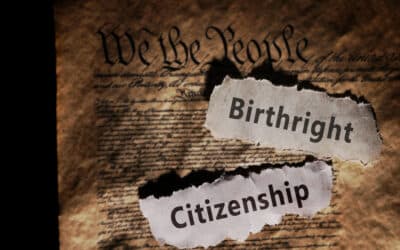Pasted several paragraphs below is a letter to the Wall Street Journal from the chancellor of the University of California at Davis and the vice chancellor for diversity, equity and inclusion.
The letter reveals what they believe is the mission of a university and what their real agenda is regarding diversity. No doubt, such thinking is shared throughout the California system and across academia.
The letter was in response to a previous commentary in the Journal by the chair of the university’s math department, who took exception to the university requiring new faculty members to sign an oath of loyalty to diversity and inclusion.
The letter to the editor is a sickening display of the mindless parroting of clichés, banalities and platitudes about diversity and inclusion that pervade not only academia but also media and industry.
This corruption of diversity is particularly disgusting to me, because I had been at the leading edges of the equal opportunity and affirmative action movements long before Harvard Assistant Professor R. Roosevelt Thomas, Jr., began the diversity movement in 1990 with his landmark article in the Harvard Business Review. Since then, I have watched his basically good idea degenerate into ignorance, group think, phoniness, litmus tests, and racial divisiveness and discrimination—all administered by highly paid apparatchiks and their cadres, who, like all bureaucrats everywhere, have to keep inventing problems instead of solving problems, in order to grow their power and pay.
My thoughts continue after the letter.
UC Davis Defends Its ‘Diversity Statements’
The Wall Street Journal, Dec. 26, 2019 3:33 pm ET
Prof. Abigail Thompson, chair of the mathematics department at the University of California, Davis, compares the use of diversity statements in faculty hiring to political tests, noting that “mandatory diversity statements can too easily become a test of political ideology and conformity” (“The University’s New Loyalty Oath,” op-ed, Dec. 20). We disagree strongly with this premise. It is inaccurate, at once illogical and rhetorically inflammatory, and reminiscent of historical attempts to blunt substantive actions aimed at desegregation and broadening participation.
The tripartite mission of the University of California is research, teaching and public service. Given the totality of our mission, serving our student body is a top priority, and contributions to diversity are as important to that end as research and teaching. Indeed, not asking questions about a candidate’s readiness to serve the diverse population of students in California, the most diverse state in the nation, would be negligent.
Respecting and understanding students and colleagues from all backgrounds may come naturally to many. But engaging colleagues and having the ability to recognize and correct inequities is a skill. Actively using inclusionary practices to engage students from different backgrounds is part of the skill set we expect from faculty.
University of California policy states that diversity is “integral to the University’s achievement of excellence,” and enhances “the ability of the University to accomplish its academic mission.” True commitment to diversity, equity and inclusion is active, not passive.
Renetta Garrison Tull and Gary S. May
Davis, Calif.
Ms. Tull is vice chancellor for diversity, equity & inclusion and Mr. May is chancellor of the University of California-Davis
The letter reveals the priorities of not only UC-Davis but also most universities. The writers believe that “contributions to diversity” (whatever that means) are just as important as research and teaching. In other words, ideology is just as important as the traditional missions of universities.
Thank goodness that farmers are not required to pursue nebulous social goals in addition to farming. When Stalin demanded ideological purity of kulak farmers and imposed social goals on them, mass starvation was the result.
The letter writers think that prospective faculty should have the ability to “recognize and correct inequities.” Translation: They should recognize and correct societal unfairness and injustice. Who knew that college professors have the miraculous ability to heal the sick, help the poor, and turn water into wine?
UC-Davis has a strange notion of correcting inequities. A state school supported by state taxes, including taxes paid by poor families with no family members in college, it accepts 60% of foreign students who apply at the school but only 36% of California residents who apply to the school. Money explains most of this disparity. Foreign students are charged higher tuition than in-state residents At last count, 2,000 of the foreign students are from communist China. No doubt, many of them can afford the high costs at UC-Davis, because they are the offspring of Chinese mercantilists who are loyal party members and benefit from rigged state enterprises. One wonders if UC-Davis professors are expected to recognize and correct the inequities of communism, or if they are even allowed to mention the horrors of Maoism in front of these high-paying students.
At the same time, under the guise of fairness and social justice, there is a growing movement across academia to increase the college enrollment of people deemed disadvantaged by race, by doing away with SAT scores in college admissions, doing away with math tests and even grades in college courses, and pressuring faculty to give a pass to students who are unprepared for college. Is this what is meant by recognizing and correcting inequities?
Kurt Vonnegut was prophetic in 1961, when he wrote “Harrison Bergeron,” the fictional story about constitutional amendments being passed to outlaw Americans from being above average and to establish an office of handicapper general to enforce the law.
In a similar vein, quantifiable measures of academic preparedness and performance are seen as unfair and unjust by today’s handicapper generals, for two reasons:
First, as the thinking goes, quantifiable standards unfairly punish students who grew up in broken families, lived in poor communities, attended inferior public schools, and are of a race that has suffered since the birth of the nation at the hands of privileged whites.
Whether or not this thinking has merit, it’s of course rather late to wait for college to correct such disadvantages. After all, public K-12 schools and scores of state and federal agencies supposedly exist for the purpose of helping the disadvantaged overcome their disadvantages. If these institutions, along with families and local communities, have failed children for the first 17 years of their life, it is wishful thinking to believe that a vice chancellor of diversity, equity and inclusion can succeed where they have failed.
Second, math is seen as a white male system, or construct, designed to maintain white male privilege.
Left unanswered is what should replace math as the language of engineering, physics, and other disciplines. Also left unanswered is why certain Asian ethnic groups excel in math.
I have written thoughtful commentaries—or what I’ve maybe deluded myself into thinking are thoughtful—on other corruptions of the diversity and social justice movements. The most recent was “Nightmares about Social Justice Phonies,” which has been re-published by others and is available upon request.
My focus in the rest of this commentary will be narrower. It will be on the meaning of the word “diversity,” not the dictionary definition but the meaning of the word as used by the diversity industry.
As used by the industry, “diversity” means the opposite of diversity. It means reducing the thousands of unique ethnicities into several racial categories established by the government a half-century ago, such as white, black, Hispanic, Asian, Pacific-Islander and Native American.
These categories were established in spite of a lack of agreement on what constitutes a race, other than skin color and a few other physical characteristics; but even then, the distinctions are not clear-cut, as many people in a given official government category are multiracial and don’t have similar physical characteristics, especially in the Hispanic category.
Of course, there are not inherent, or genetic, differences in intelligence, drive, determination, or morals between the races, although some racists of all races think otherwise. But there are marked differences in values, beliefs, customs and social norms between ethnic groups, nationalities and economic classes—cultural differences that transcend race.
It’s also true that some cultural norms are counterproductive and responsible for subpar economic and educational outcomes. Accordingly, the first step in changing the outcomes for the better is to acknowledge the norms.
Acknowledgement of counterproductive cultural norms is dangerous, however, because of the diversity movement’s obsession with race and the forced-fitting of thousands of different ethnicities into the handful of racial categories. When the world’s diversity is reduced to several racial categories, and when society is seen through these racial lenses, a suggestion that a social problem might have cultural roots becomes proof of racism, because many people have been led to believe that culture and race are synonymous.
It is seen as racist in some quarters, for example, to hypothesize that a cultural norm of fatherless families among certain groups is a principal cause of poverty, crime and school dropouts, even if the hypothesis goes on to explain that the cultural norm is the result of socioeconomic factors and misguided welfare programs, not the result of a genetic predisposition for promiscuity. And if the hypothesis is made by a middle-class white person, the charge of racism comes with an accusation that the person is blinded by bourgeois values.
Due to this obsession with race, diversity has become an exercise in reductio ad absurdum.
The reduction is not only absurd but also insensitive and insulting.
For example, it is insensitive and insulting to tell Koreans that they are the same race as Japanese—that there is no difference between their respective histories, ancestries, customs, values, and beliefs, because they are classified as Asians. It is equally insensitive and insulting to tell Chinese, Malaysians, Vietnamese, Laotians, East Indians, Filipinos and other unique peoples from Asia and the sub-continent that they are nothing more than a non-descript, homogenous clump of Asians, because the arrogant U.S. government has deemed it so, and because insensitive deans of diversity and inclusion have perpetuated the insulting absurdity.
The reductio ad absurdum leads to other absurdities, including one endorsed by the U.S. Supreme Court—namely, the notion that learning is enhanced in college if there are students from the official government categories in the classroom. Correction: if there are non-white students in the classroom.
The underlying premise is that someone from a category can speak for everyone else in the category. Someone in the Asian category, for example, can speak for all of the other peoples in the Asian category, because all Asians are the same. Accordingly, a Chinese student can speak for the feelings and experiences of Indonesians, and vice versa.
Likewise, a blue-blooded Bostonian like Elizabeth Warren can speak for the feelings and experiences of this olive-skinned grandson of poor Italian immigrants who settled in the Midwest. After all, the government and diversity deans have deemed that everyone in the white category is the same, although, in fact, there are over 100 different ethnicities in the category, as well as all social classes, all education levels, all income levels, and all ideologies.
There is less variation, or diversity, among the population of China. That’s because the ethnic Han make up 90% of the Chinese population and thus have all of the political power, privileges and group-think that accrue to such a large majority. This percentage no doubt holds for the Chinese nationals at USC-Davis. If true, that leaves the Han majority to speak in college classrooms for the ethnic minorities in China, including the Achang, Bai, Bonan, Bouyei, Blang, Dai, Daur, Deang, Dong, Dongxiang, Dulong, Ewenki, Gaoshan, Gelao, Hani, Hezhe, Hui, Jing, Jingpo, Jinuo, Kazak, Kirgiz, Korean, Lahu, Li, Lisu, Luoba, Manchu, Maonan, Menba, Miao, Mongolian, Mulao, Naxi, Nu, Oroqen, Ozbek, Pumi, Qiang, Russian, Salar, She, Shui, Tajik, Tatar, Tibetan, Tu, Tujia, Uigur, Wa, Xibe, Yao, Yi, Yugur, and Zhuang.
Or maybe the vice chancellor for diversity, equity and inclusion makes sure that each of these ethnic minorities is represented in the student body of UC-Davis, so that students can learn about China without relying on the perspective of the Han majority. And maybe she does the same for the thousands of other ethnic groups across the globe, making sure that each one is represented in the student body; or alternatively, that at least each one’s unique history, culture and viewpoints are covered in the classroom, including in math class.
On the other hand, it’s probably impractical for even a high-paid diversity official and her staff to cover all groups equally. As such, it’s highly probable that the vice chancellor picks and chooses which ethnicities to admit to the university and to cover in classes. If so, what are her criteria for including some and excluding others? Does her political ideology come into play, does she have a hidden agenda, and who provides oversight to make sure that she isn’t biased?
Admittedly, I did learn something about race and ethnicity when I lived in the barrio and attended a university with a large percentage of Latinos, primarily Mexican Americans and Mexican nationals, many of whom were close friends and fellow ROTC cadets—highly gung-ho ones at that. We spent most of our time talking about women, sports, cars, the draft, where we could buy beer, and what Army branch we hoped to get into after graduation to fulfill our active duty obligation.
We didn’t have highbrow conversations about our respective Gringo and Latino views of race, poverty, social justice, the Alamo, Sam Houston, the War with Mexico, or the Gadsden Treaty. Maybe such highbrow discussions take place in the Ivy League, where all of the Supreme Court justices went to college, but they didn’t take place in my alma mater. My understanding of those topics came after college, from years of reading history, including, most recently, “El Norte,” the scholarly book on the history of Hispanics in the Americas, going back to the Spanish Empire, which brought slaves to America decades before the British Empire did.
So what did I learn in college from my Hispanic classmates? I learned that Hispanics come in different shades, come from different social classes, are predominately Catholic, and are family oriented—just like Italians.
One friend who took me to visit his family in Monterrey, Mexico, had skin whiter than mine, an aristocratic Spanish father who was a wealthy industrialist, and a boyhood home that was way beyond the reach of my working-class parents. Another friend had brown skin, was the grandson of immigrants, had a boyhood home in the barrio of Laredo, Texas, and drove a souped-up 1956 Chevy, which he and I drove 900 miles to visit my family in St. Louis, where, given his working-class roots, he fit in nicely. Other Latino friends and classmates were at both ends of this spectrum or somewhere in between. Not one of them was representative of all Hispanics.
It was a similar learning when I worked as a teenager as the only white on an otherwise all-black janitorial, maintenance and kitchen crew at an exclusive country club in St. Louis. Not one of my black coworkers was representative of all blacks.
On my first day on the job, my boss Jewell told me to clean the employee restroom in the basement, a restroom that hadn’t been cleaned in years. Understanding even at my young age what this was really about, I cheerfully set out to make the place gleaming. As I was finishing the job, the dishwasher, who was a former prize fighter with a long scar on his face and a nervous twitch, came into the restroom drunk, proceeded to pee on the floor, and said, “Clean this up, whitey.” Another coworker, a lean but muscular twenty-something black, walked by at that moment, and quick as a cheetah, sprang on the dishwasher, shoved him against the wall, and said, ‘You clean it, you black motherf****r.” Not wanting to make an enemy out of a punch-drunk dishwasher, I thanked the younger guy and said I’d clean it.
Near the top of the staff hierarchy were the dining room waiters, all of whom were former waiters on Pullman dining cars. Their dress, grooming and manners were impeccable.
At the top of the hierarchy was clubhouse manager Bill Williams, the classiest, best-dressed, most well-spoken man I’d ever met. He even wore French cuffs and cufflinks. I would wash and wax his big blue Pontiac Bonneville for extra money.
The foregoing experiences taught me a lesson that has been reinforced throughout my life: that all races and ethnicities have good people and bad people, open-minded people and close-minded people, and racist people and non-racist people. They also have both victims and victimizers in their ranks and in their history. And they have both productive and unproductive cultural mores.
That’s why I believe that it’s an intellectual fraud to reduce the great diversity of the nation and world to several racial categories and then to treat each category as homogenous.
That’s not a profound observation, but it’s apparently over the heads of the chancellor and vice chancellor of UC-Davis.































